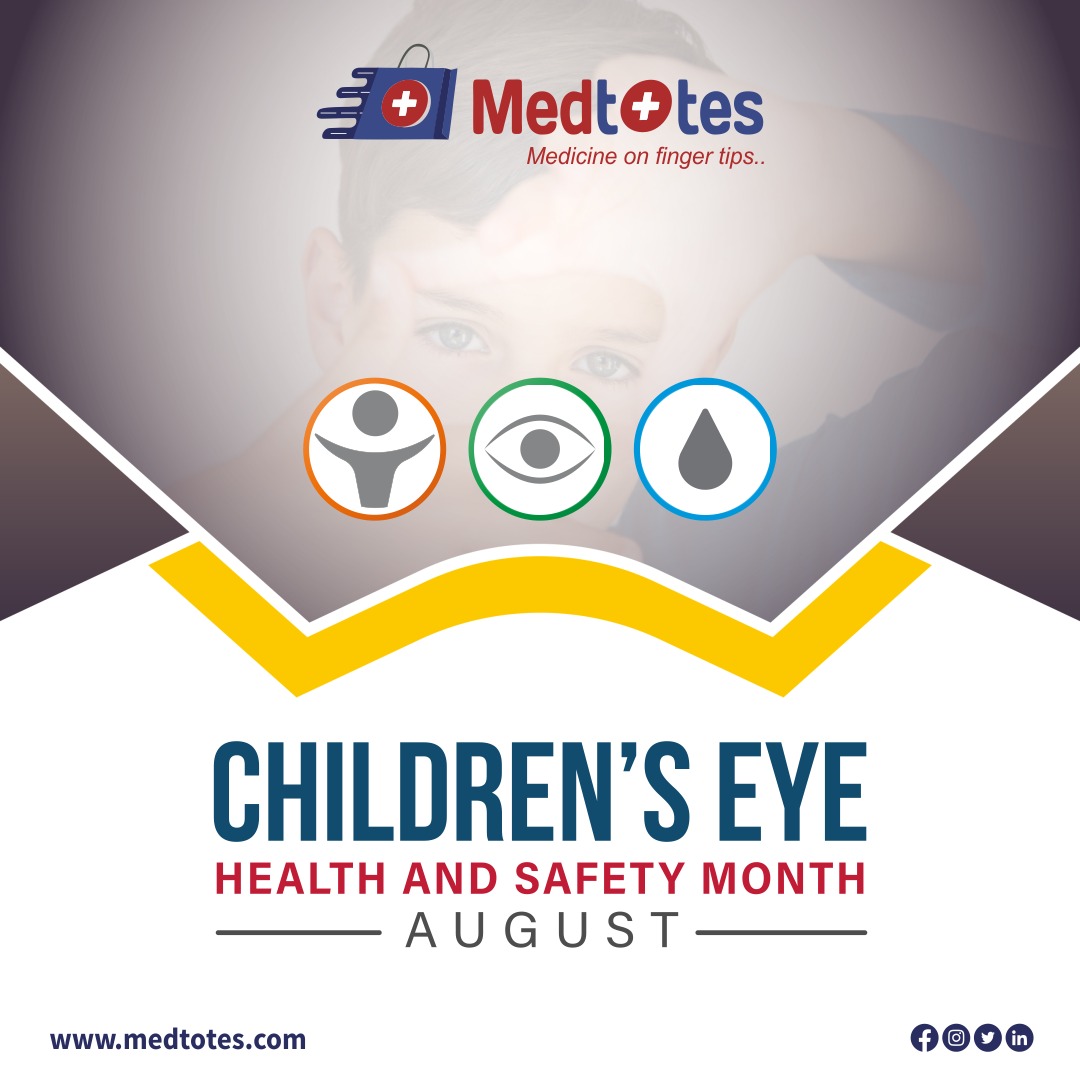EXPLANATION OF CHILDREN’S EYE HEALTH AND SAFETY MONTH
Children’s Eye Health and Safety Month is an annual observance celebrated in August to raise awareness about the necessity of children maintaining good eye health and safety habits. Its goal is to educate parents, caregivers, and educators about the potential threats to children’s vision and how to avoid them. This monthlong campaign also promotes the importance of frequent eye exams in youngsters for early detection of any vision abnormalities. We can assist children have good eyesight by promoting basic eye care habits and safety measures.
COMMON EYE HEALTH ISSUES IN CHILDREN
- Myopia (nearsightedness)
Hyperopia (farsightedness) Astigmatism Amblyopia (lazy eye)
Strabismus (misaligned or crossed eyes) III. The Influence of Eye Health Issues on Child Development Academic Performance and Learning Difficulties
Social and emotional consequences Physical restrictions and concerns about safety.
Preventive Measures and Interventions for Maintaining Children’s Eye Health
Routine eye checkups and screenings Proper nutrition and physical activity
SYMPTOMS & DIAGNOSIS
Although the symptoms and identification of eye health issues in children vary, it is critical for parents and caregivers to be aware of potential signals such as frequent headaches, eye rubbing, squinting, or difficulty focusing. Regular eye exams and screenings, beginning at a young age, can aid in the early detection and treatment of vision issues. Furthermore, providing sufficient diet to youngsters and encouraging physical exercise will help them retain good eye health.
- Protective eyewear during sports and outdoor activities
- Limiting screen time and encouraging outdoor play
- Educating parents and caregivers on the importance of eye health
- Early intervention and therapy for eye conditions
- Creating an inclusive and supportive environment for children with vision impairments.
By implementing these preventive measures and interventions, we can ensure that children have the best chance at maintaining good eye health and achieving their full potential in all aspects of their development.
AMBLYOPIA (lazy eye)
It is a common condition that affects the vision of youngsters. It happens when one eye is weaker than the other, causing the brain to focus more on the stronger eye and ignore the weaker one. Amblyopia, if left untreated, can result in permanent vision loss. As a result, early detection and intervention are critical in the treatment of this illness. Regular eye tests should be performed to detect any signs of amblyopia and to offer the required therapy and treatment to enhance vision in the weaker eye.
SYMPTOMS AND DIAGNOSIS
Eye conditions such as amblyopia (lazy eye) are critical for early intervention and therapy. This can assist to prevent additional vision degradation and ensure that youngsters get the help they need to enhance their visual acuity. We can guarantee that any potential eye disorders are recognized and handled as early as possible by educating parents and caregivers about the early indications to watch for and the necessity of frequent eye exams, leading to better longterm outcomes for children’s eye health.
- STRABISMUS (crossed or misaligned eyes)
Amblyopia is commonly caused by this condition. When the eyes are not properly aligned, the brain receives contradictory visual signals, resulting in lazy eye. Strabismus can be repaired using a variety of techniques, including surgery, glasses, and vision therapy. Amblyopia, if left untreated, can result in permanent vision loss. As a result, it is critical for parents to check their children’s eye alignment and seek expert assistance if any irregularities are discovered.
SYMPTOMS & DIAGNOSIS
Crossed or misaligned eyes, double vision, and difficulty focusing are all symptoms of strabismus. A comprehensive eye examination, which may include visual acuity tests, eye movement tests, and a thorough review of the eye’s alignment, can be used to make a diagnosis. Parents must be proactive in examining their child’s eye movements and seeking professional aid if any abnormalities are discovered. Early detection and management can increase the likelihood of effective therapy and prevent longterm vision issues.
SAFETY MEASURES FOR CHILDREN’S EYE HEALTH
In addition to regular eye examinations, there are various safety precautions that parents can take to promote their child’s eye health. To begin, it is crucial that children wear adequate protective eyewear during activities such as sports or when working with hazardous materials. Second, parents should teach their children not to rub their eyes excessively, as this can cause irritation and injury. Finally, limiting screen time and increasing outside play can help lower the risk of developing eye strain and digital eye strain syndrome. By implementing these safety precautions into their child’s routine, parents can assist maintain good eye health and prevent any vision disorders.
CONCLUSION
Finally, prioritizing eye safety for children entails a combination of proactive steps such as childproofing the environment, educating them about proper toy handling, and providing close monitoring during playtime. By employing these methods, parents can significantly lower the risk of eye injuries while also providing a safe and supportive environment for their children to explore and grow.

